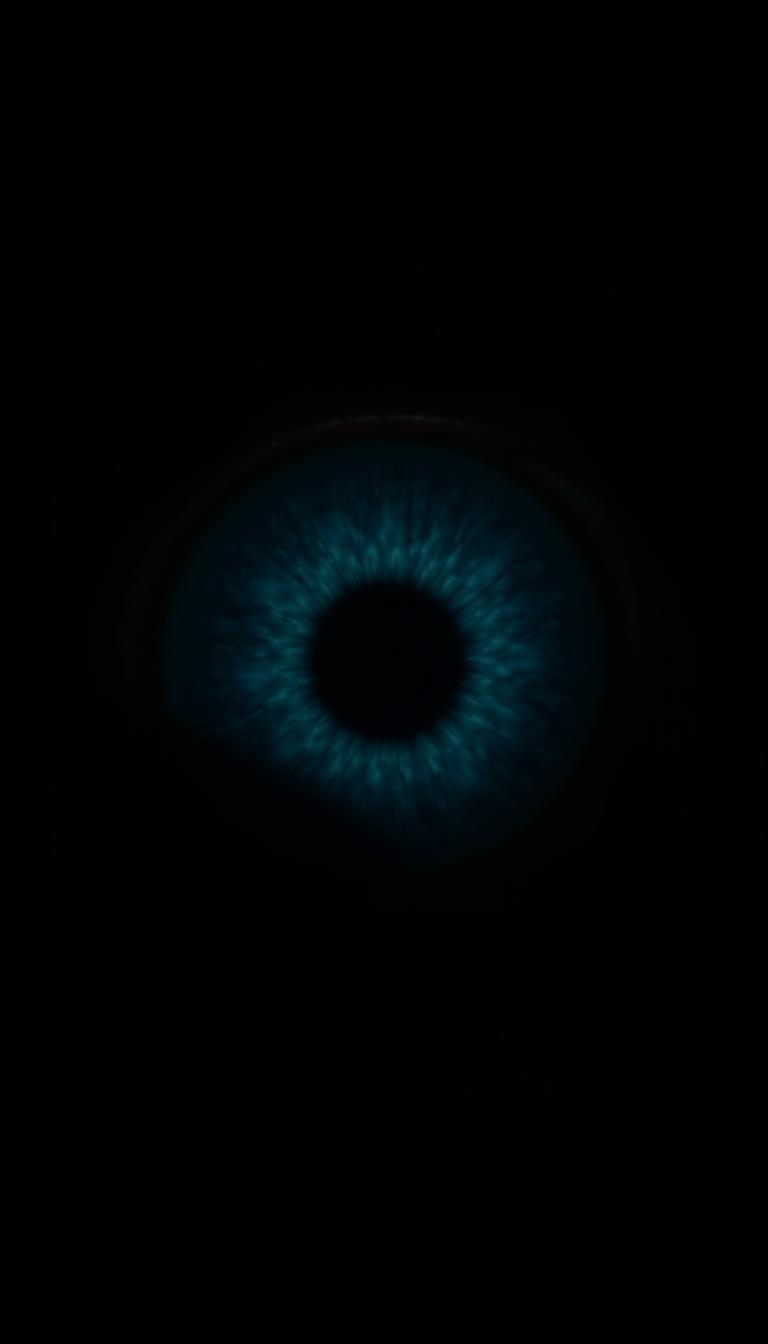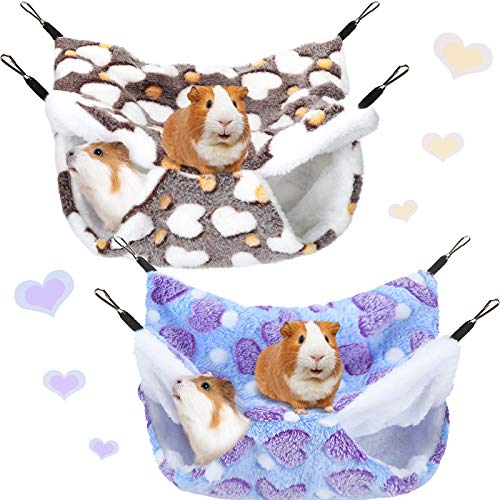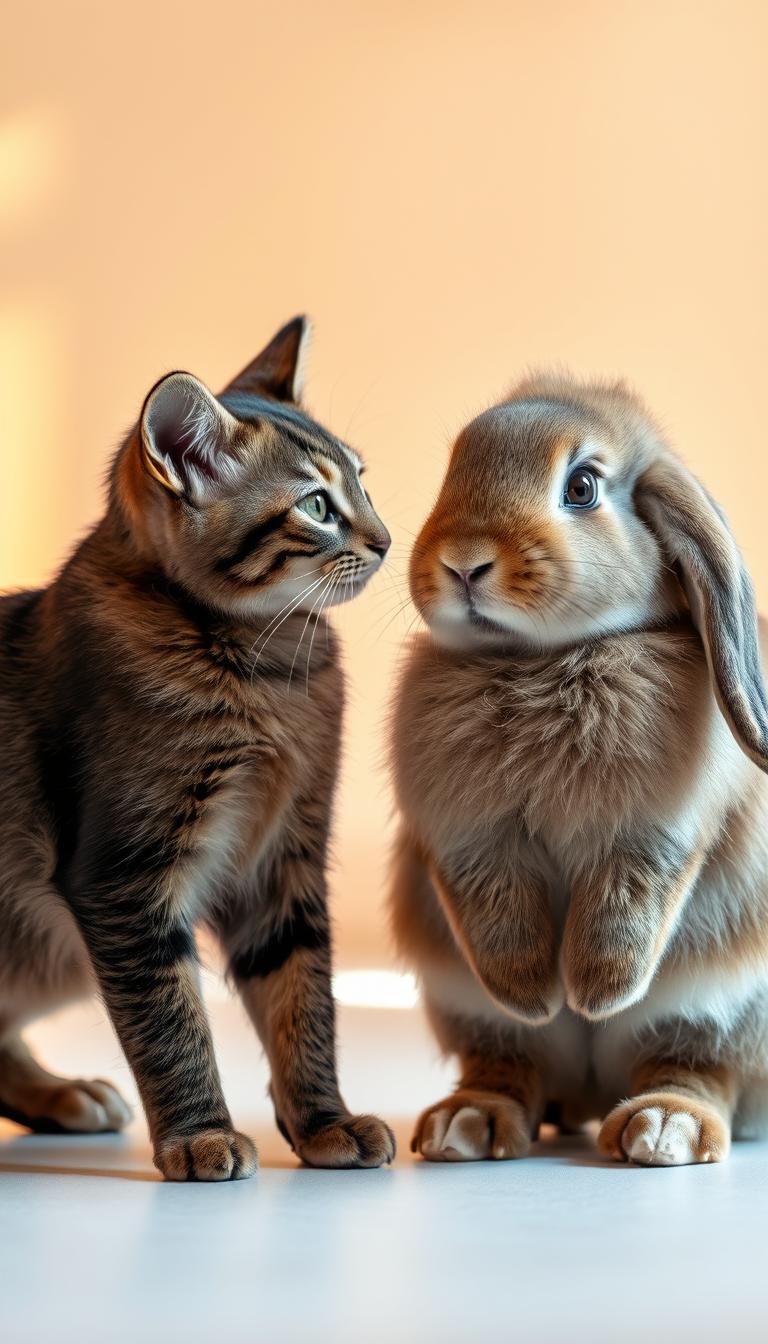Ever wondered how your furry friend experiences their surroundings? While humans enjoy vibrant rainbows of color, small pets perceive their environment through a dramatically different lens. Their visual capabilities evolved for survival – not binge-watching sunsets.
These creatures possess dichromatic vision, meaning they see using two color receptors instead of our three. This adaptation helps them navigate dim environments, since they’re most active at dawn and dusk. Ultraviolet light detection acts like a secret superpower, revealing patterns invisible to human eyes.
Green hues stand out clearly in their world, while red tones blend into grayscale. Imagine viewing a sunset through foggy glasses – that’s roughly how certain colors appear. Their eyes prioritize motion detection over sharp details, making sudden movements more noticeable than stationary objects.
Understanding these visual limitations helps create a pet-friendly habitat. From choosing cage accessories to positioning their wheel, every detail matters in supporting their natural behaviors. Stay tuned to uncover practical tips for enhancing your companion’s quality of life through science-backed insights.
Table of Contents
Introduction to Hamster Vision
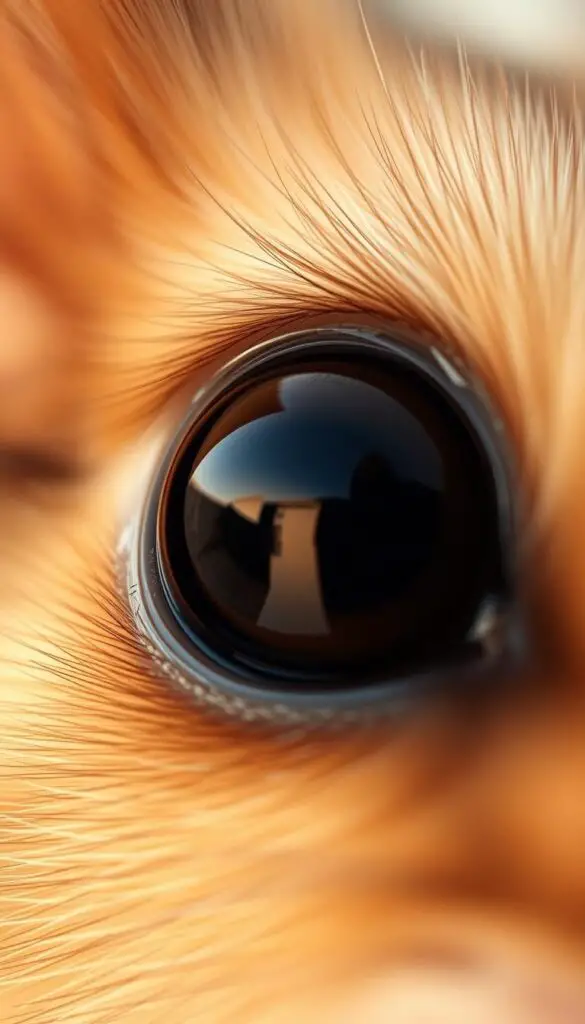
Your hamster’s world looks nothing like yours. These small animals evolved to thrive in low-light conditions, with side-mounted eyes offering panoramic views of their surroundings. While you see crisp details, their vision prioritizes detecting predators over admiring decor.
Their wide field of view comes with trade-offs. Depth perception stays fuzzy, and objects beyond a few inches blur into indistinct shapes. This explains why your pet might occasionally misjudge distances when climbing.
Three key adaptations define their eyesight:
- Enhanced motion detection for spotting threats
- Light-sensitive cells working overtime at dawn/dusk
- Limited color processing optimized for survival
You’ll notice they rely more on whisker vibrations and scent trails than visual cues. That twitching nose isn’t just cute – it’s gathering critical information their eyes can’t provide.
Understanding these limitations helps you design better habitats. Place food and water in consistent locations, and avoid sudden layout changes that might disorient your furry companion. Their world may lack visual clarity, but with thoughtful adjustments, you can make it feel like home.
Understanding Color Vision in the Animal Kingdom
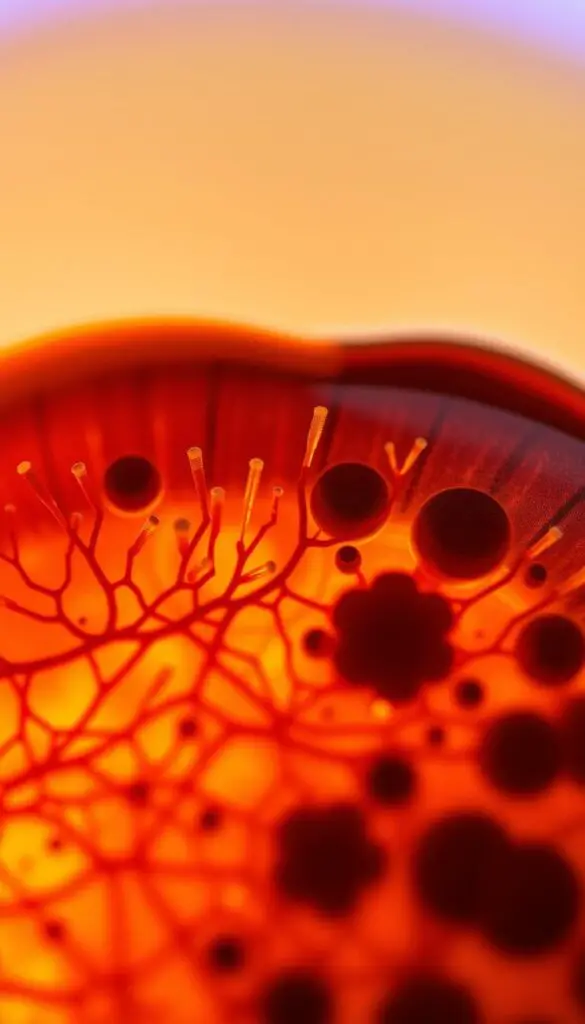
Nature paints the world differently for every creature. What you perceive as vivid red might appear muted or invisible to other species. This diversity stems from specialized cells called photoreceptors that convert light into visual signals.
How Photoreceptors Work
Your eyes contain two main photoreceptor types: rods for low-light detection and cones for color. Cone cells detect specific wavelengths – like biological paintbrushes capturing red, green, or blue hues. Most animals have fewer cone types than humans, limiting their ability to see color variations.
Dogs, for example, view yellows and blues clearly but struggle with red-green contrasts. This adaptation helps them spot movement in grassy fields rather than admire autumn leaves. Evolutionary needs shape these visual systems over generations.
Trichromatic vs. Dichromatic Vision
Humans enjoy trichromatic vision thanks to three cone types. This lets you distinguish over a million color shades. Many mammals use dichromatic vision with just two cone varieties. Their world appears less saturated but optimized for survival tasks.
Nocturnal species often sacrifice color perception for better night vision. Diurnal creatures like butterflies sometimes see ultraviolet patterns on flowers. These differences explain why your pet’s view of their environment might surprise you.
The Biology Behind Hamster Eyesight
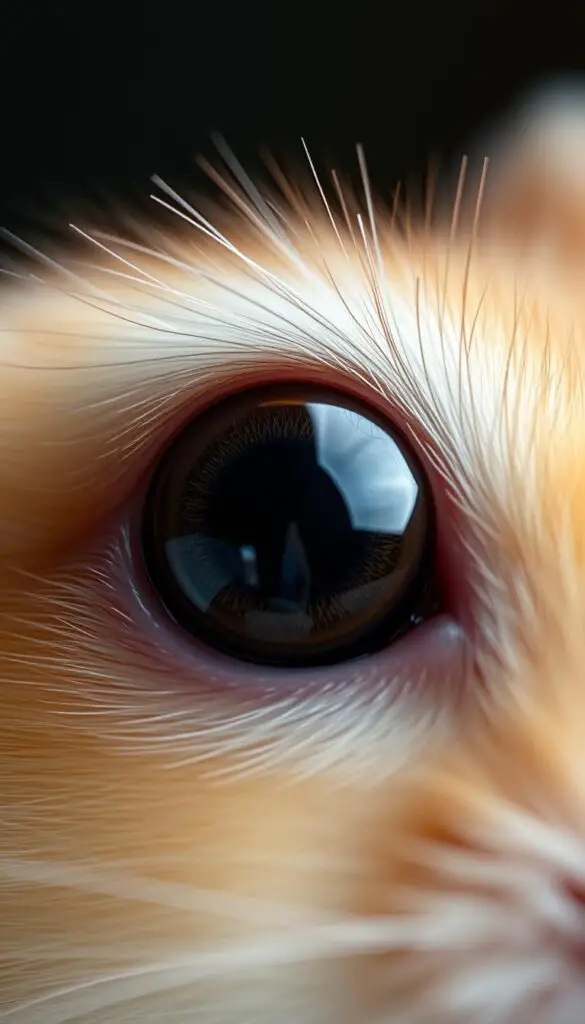
Peering into your pet’s eyes reveals a biological masterpiece shaped by evolution. Their vision relies heavily on rod cells – specialized structures excelling in low light detection. Unlike human eyes packed with color-sensing cones, hamster eyes prioritize survival in dim environments.
This rod-dominated design explains why your furry companion navigates best at dusk. While you distinguish sharp details, their world remains softly blurred. Objects beyond 3-4 inches lose clarity, turning distant treats into fuzzy mysteries.
Three key biological factors define their sight:
- Side-positioned eyes providing 270-degree surveillance
- Minimal cone cells limiting color variety
- Extra light-sensitive tissue enhancing night vision
Their wide-set eyes act like security cameras, spotting movement from nearly every angle. But this panoramic view sacrifices depth perception. Watch how they cautiously sniff before climbing – their brain compensates for limited 3D vision.
Understanding this biology helps you create safer spaces. Place food bowls and toys within their clear-seeing range. Avoid sudden cage rearrangements that might confuse their light-dependent navigation system. Your awareness of these visual limits makes you a more thoughtful caretaker.
Exploring Are Hamsters Colorblind: Facts & Findings
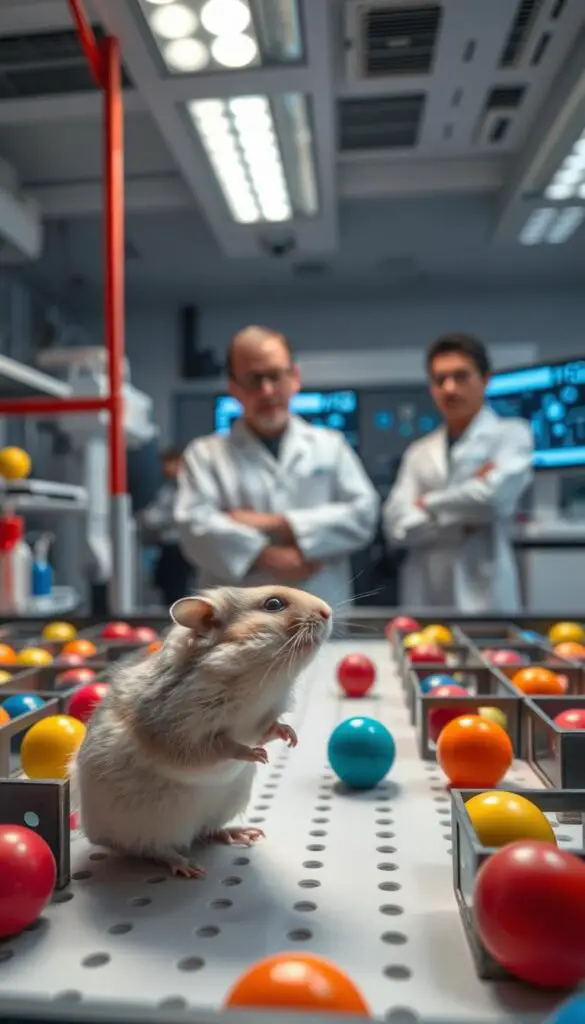
Science reveals surprising truths about how your pet perceives its environment. Unlike humans with three color receptors, these small animals use dichromatic vision – detecting blues and greens while struggling with reds. This explains why scarlet toys might look dull or grayish to them.
Researchers at the University of Bradford confirmed this through maze experiments. When offered colored pathways, subjects consistently chose blue over red options. “Their world isn’t black-and-white, but it’s missing warm tones,” notes lead biologist Dr. Emily Trenton.
Key distinctions to remember:
- Limited color perception ≠ complete colorblindness
- Green hues appear most vivid
- Ultraviolet detection aids navigation
Many owners mistakenly believe their pets see in monochrome. In reality, your furry friend distinguishes some shades but lacks the visual richness you experience. This explains why they prefer high-contrast environments.
Practical applications emerge from these findings. Choose cage accessories in blues and greens rather than reds. Position food bowls against neutral backgrounds for easier spotting. Understanding their vision capabilities helps create spaces that align with their biological strengths.
Scientific Insights into Hamster Color Perception
Your pet’s eyes hold secrets human vision can’t decode. Unlike our rainbow-filled world, their view revolves around two specialized photoreceptors tuned to specific light wavelengths. This biological design creates a unique visual experience focused on survival, not aesthetics.
Limited Color Spectrum Explained
These small companions process colors through just two types of cones in their eyes. While you enjoy vibrant reds and oranges, their system filters out warmer tones. Reds often appear gray or brown, making scarlet toys less noticeable than blue or green ones.
Research shows their vision spans blue-violet to green-yellow ranges. This limited color vision helps them spot food against natural backgrounds. Bright oranges or pinks might blend into surroundings, explaining why leafy greens catch their attention faster.
Green and Ultraviolet Sensitivity
Green hues pop in their world due to specialized cone cells. Studies suggest they see well in this spectrum, which aligns with their natural habitat’s vegetation. Fresh veggies like kale or spinach might look extra appealing through their eyes.
Their hidden superpower? Detecting ultraviolet light. This ability lets them navigate dim spaces and see urine trails or food sources invisible to you. “UV sensitivity acts like night-vision goggles,” explains animal behaviorist Dr. Lisa Morrow. “It transforms murky environments into detailed landscapes.”
Use this knowledge when setting up their home. Opt for toys in blues and greens, and consider UV-safe lighting for evening activity periods. Your awareness of their visual strengths helps create a space that’s both functional and stimulating.
Hamster Vision Under Low Light Conditions
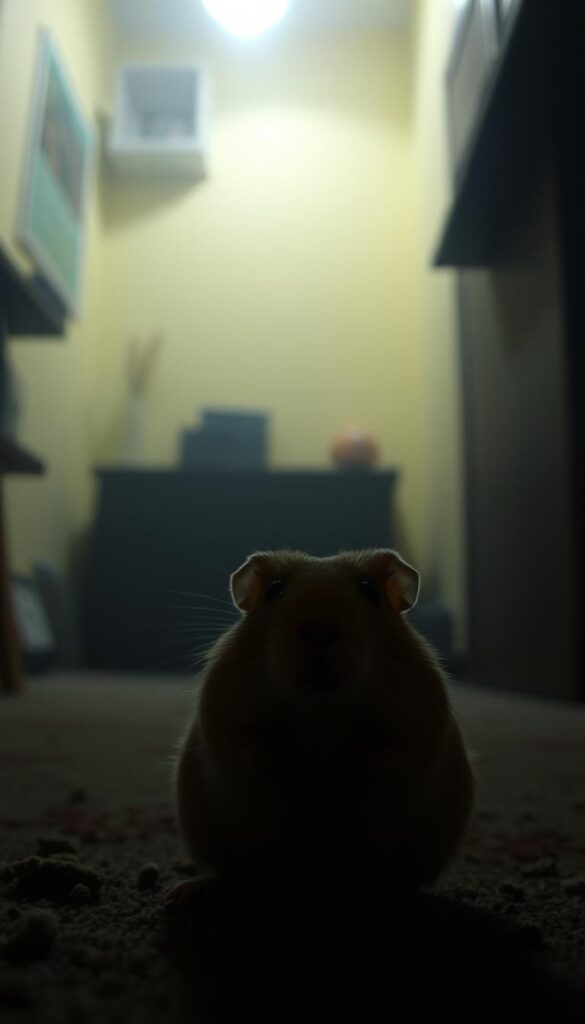
Ever notice your pet’s burst of energy as daylight fades? Their internal clock thrives in low light conditions, when shadows stretch and human eyes strain to see. This crepuscular rhythm stems from evolutionary survival tactics – peak activity during twilight hours minimizes predator encounters.
Rod cells dominate their ocular structure, acting like night-vision enhancers. These light-sensitive receptors work 100x better than human versions in dim settings. While you’d fumble for a flashlight, your furry companion navigates confidently through near-darkness.
Three adaptations make this possible:
- Extra-wide pupils absorbing maximum available light
- Mirror-like eye tissue reflecting photons through receptors twice
- Fast neural processing detecting subtle movements
Your home’s “dim” evening lighting actually creates ideal light conditions for their visual system. Bright overhead lamps can overwhelm their sensitive eyes – try using indirect lighting near their habitat. As research shows, maintaining natural darkness cycles supports their biological needs.
Watch how they explore during dusk hours. That confident scampering proves their world comes alive when yours fades to gray. Understanding this helps you create spaces where their unique vision shines – literally.
Adapting to a World of Limited Color
Your pet’s eyes reveal a fascinating survival blueprint optimized for twilight living. Unlike humans who prioritize colorful details, their vision focuses on detecting shadows and movements in murky environments.
Reliance on Rod Cells Over Cones
These small companions evolved with eyes packed with rod cells – specialized sensors excelling in low-light detection. While cones handle color processing in bright conditions, your pet’s limited supply explains their muted world of greens and grays.
This biological trade-off delivers crucial benefits. Rods require minimal light to function, letting them navigate underground tunnels effortlessly. You’ll notice they freeze when sensing motion – their visual system prioritizes threat detection over admiring decor.
Advantages in Dim Environments
Their burrow-ready vision shines brightest at dusk. Rod cells amplify available light through mirror-like eye tissue, creating usable images where you’d see darkness. This explains midnight snack raids and energetic wheel sessions under dim lighting.
Three key adaptations support their lifestyle:
- Light-sensitive pupils expanding like camera apertures
- Rapid motion processing for predator evasion
- Minimal cone interference in dark settings
Understanding this helps you design better habitats. Use soft lighting near their cage and avoid sudden brightness changes. Their vision might lack rainbow hues, but it’s perfectly tuned for their crepuscular adventures.
How Hamsters Compensate with Other Senses
What happens when vision takes a backseat? Your pet’s survival toolkit goes beyond eyesight, using biological superpowers you might overlook. Their world comes alive through scent vibrations and sound waves – a sensory symphony invisible to humans.
Exceptional Sense of Smell
That twitching nose works like a GPS. With sense smell 100x stronger than yours, they detect food through sealed packaging and recognize family members by scent. Research shows they create mental maps using odor trails – think of it as sniffing their way home.
“Scent marks act like sticky notes in their environment,” explains veterinarian Dr. Sarah Klein. “They leave messages about territory, mating readiness, and safe pathways.”
Acute Hearing and Whisker Function
Those satellite-dish ears catch sounds you can’t hear. From predator rustles to your approaching footsteps, their hearing range extends into ultrasonic frequencies. Whiskers act as built-in measuring tapes, gauging tunnel widths and detecting air currents.
| Sense | Human Capacity | Hamster Advantage |
|---|---|---|
| Smell | 5 million receptors | 25 million receptors |
| Hearing | 20Hz-20kHz | 1kHz-90kHz |
| Tactile | Fingertip sensitivity | Whisker span = body width |
Enrich their habitat with textured surfaces and hidden treats. Scatter food instead of using bowls to trigger natural foraging instincts. Your awareness of these sense adaptations helps create a stimulating environment that plays to their strengths.
Recognizing Vision Issues in Your Hamster
Is your small companion squinting more than usual? Spotting eye conditions early helps maintain their quality of life. While these pets naturally have limited eyesight, certain symptoms signal health concerns needing attention.
Identifying Cataracts and Other Eye Problems
Watch for these physical changes in your pet’s eyes:
- Cloudy or milky appearance (cataracts)
- Redness with crusty discharge (conjunctivitis)
- Bulging eyeballs (glaucoma or exophthalmos)
Older pets often develop cataracts that gradually impair vision. While painless, complete blindness may occur. Conjunctivitis requires gentle cleaning and vet-prescribed antibiotics. Bulging eyes demand immediate care – delays could worsen internal pressure.
Behavioral Changes to Watch For
Vision loss alters daily habits. Your pet might:
- Hesitate when climbing familiar structures
- Bump into cage accessories more frequently
- Rely heavily on whiskers to navigate
Sudden aversion to bright lights often indicates glaucoma. If treats go unnoticed unless scented, their eyesight might be failing. Always consult an exotic animal specialist for persistent issues – early intervention prevents complications.
Understanding how these small pets perceive their helps distinguish normal behavior from health alerts. Regular cage checks paired with observation create a safety net for their unique needs.
Practical Tips for Monitoring Your Hamster’s Eyesight
Keeping track of your small companion’s vision requires simple yet effective strategies. Start with daily visual checks during feeding time. Look for clear, bright eyes without discharge or cloudiness. Healthy pets blink regularly and maintain consistent activity levels.
Notice increased clumsiness? Occasional stumbles are normal, but frequent falls or collisions suggest vision loss. Track how your furry friend navigates familiar spaces over several days. If they hesitate at cage edges or miss food placements, consider scheduling a vet visit.
For minor issues like crusty eyelids:
- Use lukewarm water on a cotton ball
- Gently wipe from inner to outer eye corners
- Repeat twice daily until improvement
Remember these creatures adapt remarkably well. “Blindness rarely impacts their quality of life,” notes exotic animal specialist Dr. Rachel Torres. “They compensate through scent memory and whisker navigation.”
Create a consistent environment to support their needs. Avoid rearranging toys or food stations suddenly. Pair regular observation with annual checkups – early detection prevents most eyesight complications. Your watchful care ensures your pet thrives regardless of visual capabilities.
Emphasizing Vet Approved Care for Hamster Health
Caring for your pet’s vision starts with vet approved expertise. Eye changes often signal health issues needing prompt attention. New 2025 vet approved guidelines recommend annual checkups, even for seemingly healthy companions.
Accessing 2025 Vet Approved Guidelines
Updated standards from veterinary associations outline modern treatment options. Cataracts remain untreatable but manageable through habitat adjustments. Infections often clear with prescription drops when caught early. For glaucoma, some vet approved dr. specialists now offer medication or surgery.
How to Talk Vet Online for Advice
Many clinics provide virtual consultations for quick guidance. Describe symptoms clearly – note discharge, cloudiness, or behavior changes. Licensed veterinarians can assess urgency through video calls. Always follow up with in-person visits for hands-on exams.
Remember: Sudden vision loss requires immediate care. Trust vet approved professionals over home remedies. Your proactive approach ensures the best outcomes for your furry friend’s ocular health.

